Armenian Remembrance Day
Remembering a culture that was almost erased
(Mural:Arutyun Gozukuchikyan) (Photo: Rommel Salazar)
Armenian Genocide Remembrance mural displayed on a street in Little Armenia, L.A.
April 24, 2023
LOS ALAMITOS, CA — April 18 marked Holocaust Remembrance Day, a day commemorating one of the most tragic losses of life in history. In memoriam, there is Armenian Genocide Remembrance Day. This day is just as important to our local community in Southern California and the world. Since this day and the Armenian culture it represents are less well known, this article will provide an in depth introduction to the topic.
Who are Armenians?
To understand the day entirely, it is important to know who the subject of the event is. Armenia is a small country native to a region known as the Caucasus Mountains. Though in Western Asia, their culture and ethnic identity is considered Eastern European, as White Europeans are descendants from the Caucasian Mountains of Armenia.
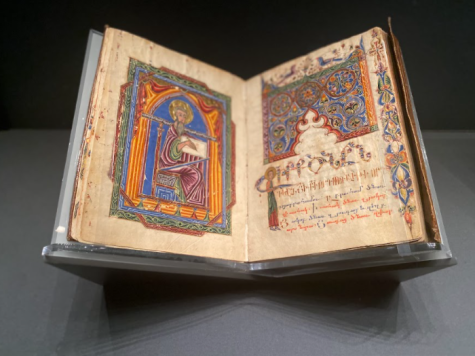
This identity is also because of Armenians adhering to Orthodox Christianity, the religion prevalent among Eastern Europeans like Greeks, Russians, and Ukrainians. This faith has always been significant to culture, as it is believed that Armenia’s Mount Ararat is where the biblical Noah’s Ark landed. Many religious Armenians therefore identify as descendants of Noah, and Armenia even became the first country to establish Christianity as their official faith.
“We take great pride in being the First Nation to make Christianity our national religion,” said Armenian-American Sheri Aslanian Stevens, the daughter of a genocide survivor.
What was the Armenian Genocide?
During the 1400’s, Armenia was conquered by the Ottoman Empire, now known as Turkiye (formally Turkey). The Ottoman Sunni Muslim government viewed the Christian Armenians as a religious and ethnic minority, so they imposed unequal legislation against them. Starting as higher taxes and lesser rights, it turned into systematic sterilization of Armenian identity. During World War I, then known as the Great War, the Ottomans had suspicions that their Orthodox Armenian subjects would side with the also Orthodox Russian Empire, Turkiye’s wartime enemy.
In 1915, the potential of Armenian co-conspiracy with Russia inspired the government to deport the Armenians from areas near Russia, including their indigenous Caucasus Mountains. Put on death marches to the Syrian Desert, they were deprived of food, water, and even clothing. Armenians on the forced migrations, many of them women and children, were also shot, tortured, crucified, and sexually assaulted by Ottoman soldiers. These murderers were members of “Butcher Battalions,” groups created by the nationalist Ottoman group The Young Turks.
If targeted killings of the Armenian ethnic group was not enough, many Armenian women and children were also sold as slaves to men across the Middle East and Northern Africa. The Young Turks proposed to erase Armenia’s cultural identity as it was deemed as “dangerous” to the Turkish state. Forced conversion of surviving Armenians to Islam was done to stomp out the traditionally Christian faith that has been with them for centuries.
In spite of the visible atrocities, the Turkish government today still denies the killings as “genocide” and even makes the excuse that this was “necessary” in maintaining security during wartime.
How is it remembered?
In spite of the attempts from the Turkish government to sweep this under the rug, Armenians both in their homeland and in diaspora across the world choose to remember that painful era of history. This is not for the sake of pointing blame at others but for remembering people of Armenian descent and culture. Like Holocaust Remembrance Day, April 24th is used to convey a culture’s story of survival. Since the purpose of the genocide was to erase the Armenian identity, preserving Armenian culture was seen as the greatest form of justice against those responsible for its cause and denial.
“The story of the Armenian people could be seen as a tragic one, but I see it as a story of survivors who no matter what came their way, refuse to let go of who they were created to be,” Stevens said about the survival of their culture.
Many Armenians emigrated across the world to escape the Ottomans, and the highest concentration of Armenian-Americans is in Southern California. Since they left much of their life behind, it was their centuries-old traditions that kept them together as they searched for a new life.
“Because of all that was lost, the need to hold onto family and heritage was imprinted deeply onto our hearts and minds,” Stevens said.

Places across Los Angeles and Glendale exhibit a plethora of restaurants and bakeries aimed at keeping Armenia’s culinary traditions alive. Businesses such as Sasoun Bakery were one of many places founded by Armenian immigrants to serve food from their home country.
The preservation of the nation’s food culture is not just for Armenians, but also for sharing these traditions with non-Armenian friends. This allows those who are not of Armenian descent to easily enjoy what the culture has to offer, contributing to its survival across the globe and here in our area.
“We were raised sharing with neighbors even what little we had,” Stevens said. “When faced with an additional mouth to feed, my mom would say, ‘we can always put more rice in the pot.’”
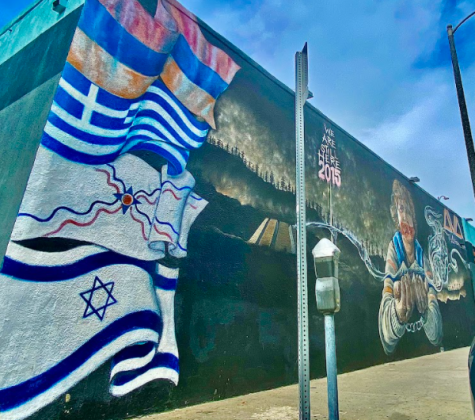
In addition to food, Armenians in these local Southern California communities dedicated memorials to this day of remembrance. Though Los Angeles is famous for its urban graffiti and wall art, the mural by Arutyum Gozukuchikyan is perhaps the most meaningful yet. It depicts the artist’s grandmother, the daughter of a family that just narrowly survived the genocide, next to the motto “We are still here,” showing the Ottomans’ failure to wipe out their identity.
Crucified bodies in the background brings awareness to the Ottoman atrocities, but the image of Mount Ararat in the hands of the artist’s grandmother brings hope to the survival of the country’s identity.
In addition to Armenia, the flags of Greece, Assyrians, and Israel are shown to commemorate the other groups that were oppressed during the genocide. Armenian churches like St. Garabed in L.A. were also constructed to keep the Armenian religion alive, which preserves the faith that has always been a unifying factor in their culture.
“The church helped reunite families who had been strewn all over the world. Our faith has given us roots. which is everything to a people who have been uprooted from their homes” Stevens about their religion.
Furthermore, remembrance has also been synonymous with accountability. Since the Turkish government still refuses to deny the killings as genocide, this angered the Armenians here in California who are descendants of the very people who felt its effects. In past years, Armenian Californians have protested against the Turkish government by marching to its consulate, as well as holding rallies in Little Armenia. Many Armenians see it as unjust for the Turkish government to not accept these valid events in history, especially since countries like Germany and the US already recognize their genocides against Jews and Native Americans.
Why this day important?
Much like the Holocaust, the Armenian Genocide is a sensitive topic, especially since the effects of it still last to this day. However, learning about the impurities of the past is important towards improving our future.
When learning about eras such as the Armenian Genocide or Holocaust, people learn that these genocides start from extreme intolerance towards certain cultures. From then on, this prejudice evolved into hate, resulting into catastrophic losses of life. Therefore, learning about these dark times of history teaches humanity to be more accepting of others in order to avoid more genocides.
If the people of our time wish to make a more tolerant society, people must learn through events like these what the consequences are if they do not. Though lives have been taken, their memories should be remembered as a lesson of acceptance for other human beings.
“Someone who came before you, thought of you, hoped good things for you and prayed for you,” said Stevens about remembering the dead.
Most of all, remembering and preserving these targeted cultures, such as Armenia’s, is necessary to mankind as a whole, not just that one group. It is diversity that keeps humanity unique and distinguished from one another, and without these different cultures, humans would lose their individuality.
“Every culture is important, because roots are important,” Stevens said. “They remind us that we are not here by chance. There is a reason those who came before survived, and that we are here in this place for this time.”
Even if someone is not Armenian, it is important to take not just this day, but every day, to learn about someone else’s culture. It is important for everyone to understand where other people came from, what they went through, and who they are.


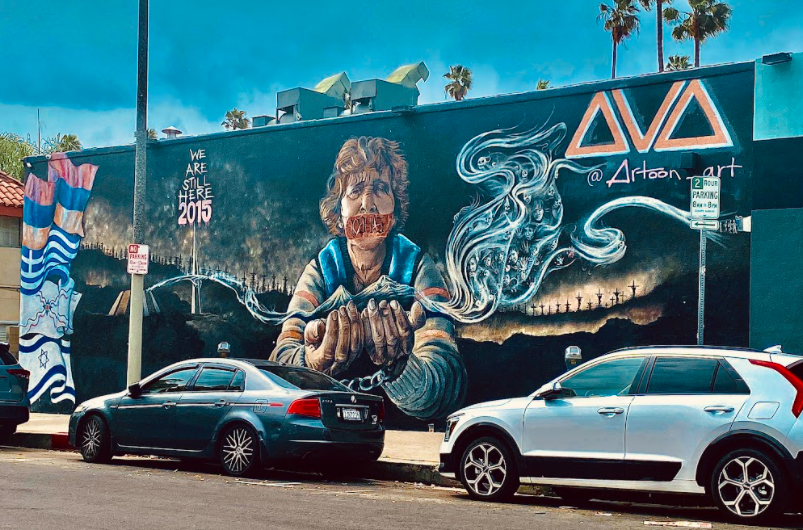
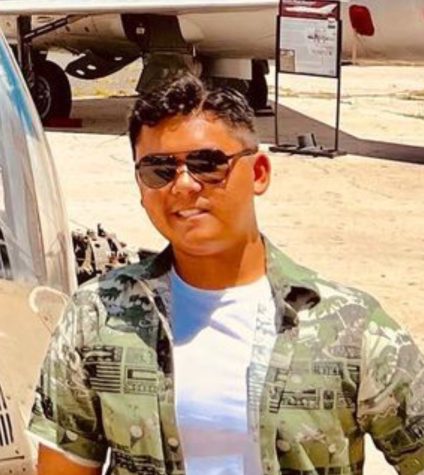
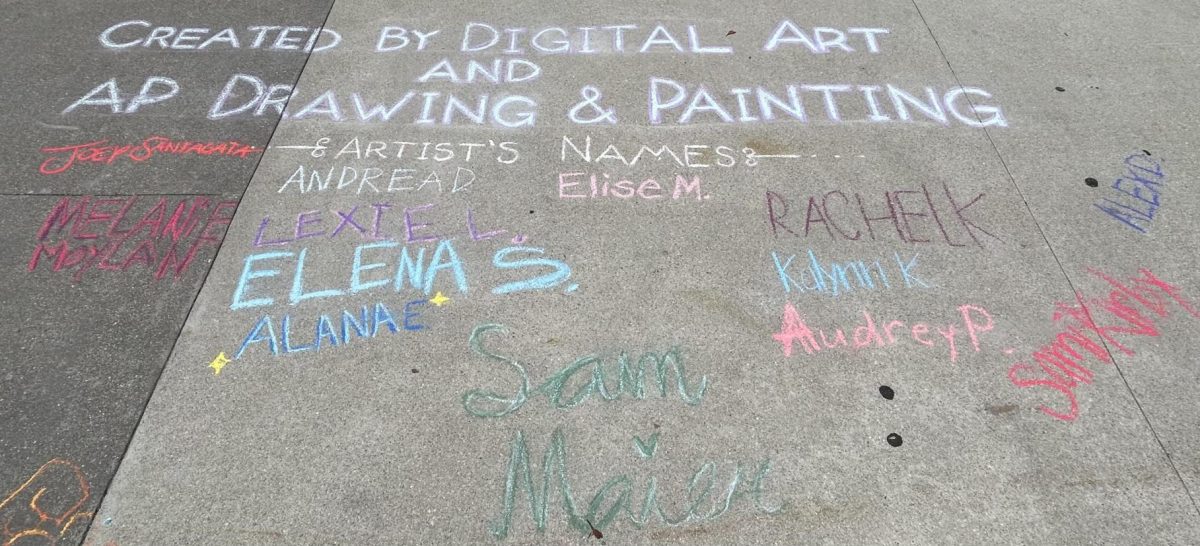
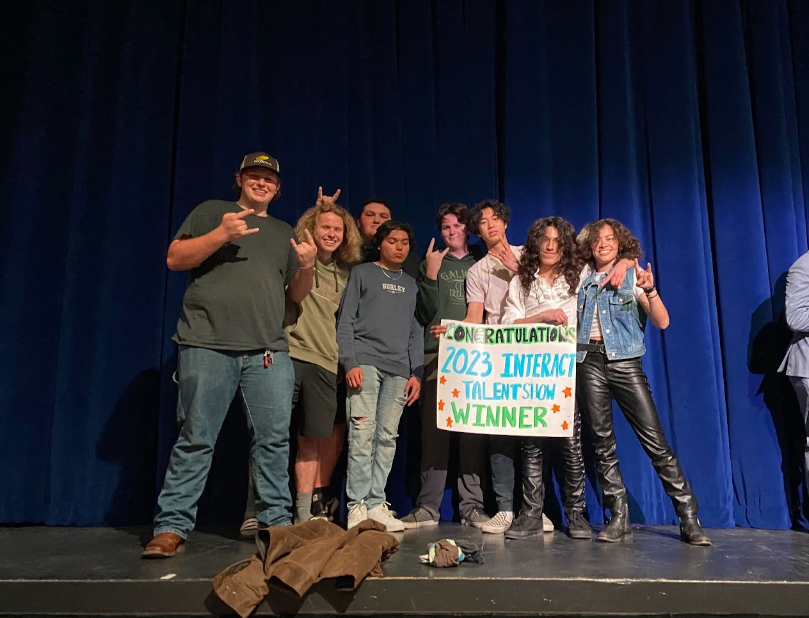



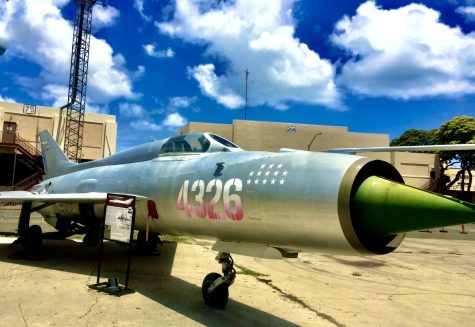
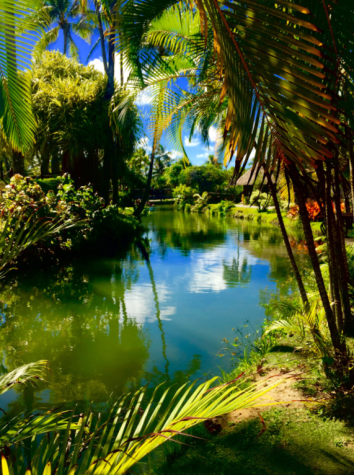
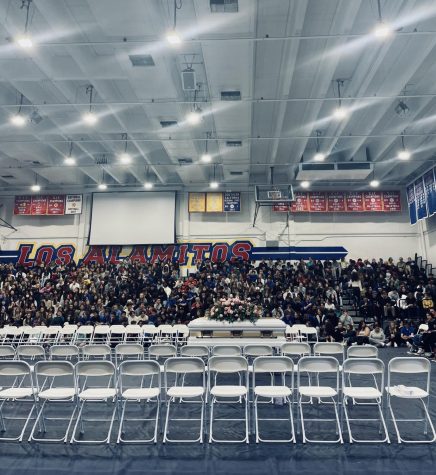
Sheri Stevens • Apr 26, 2023 at 8:31 pm
Great Article! You did a great job covering a very complex subject. Thank you for teaching others about our people. As a kid, Armenia wasn’t even on a map. People would often ask me, what’s an Armenian. That’s how little was known. Thanks for bringing it to light. I would appreciate it if you would list my Armenian name in this. Thank you, Sheri Aslanian Stevens
Rommel Salazar • Apr 27, 2023 at 11:19 am
We thank you so much Mrs. Stevens for your contribution. Because of you more people are aware of your culture and who your people are!
Rommel Salazar • Apr 27, 2023 at 11:31 am
and I made sure to include your Armenian name
Katie Arnoult • Apr 26, 2023 at 12:36 pm
Great article! I love all the photos, and the mural is stunning!